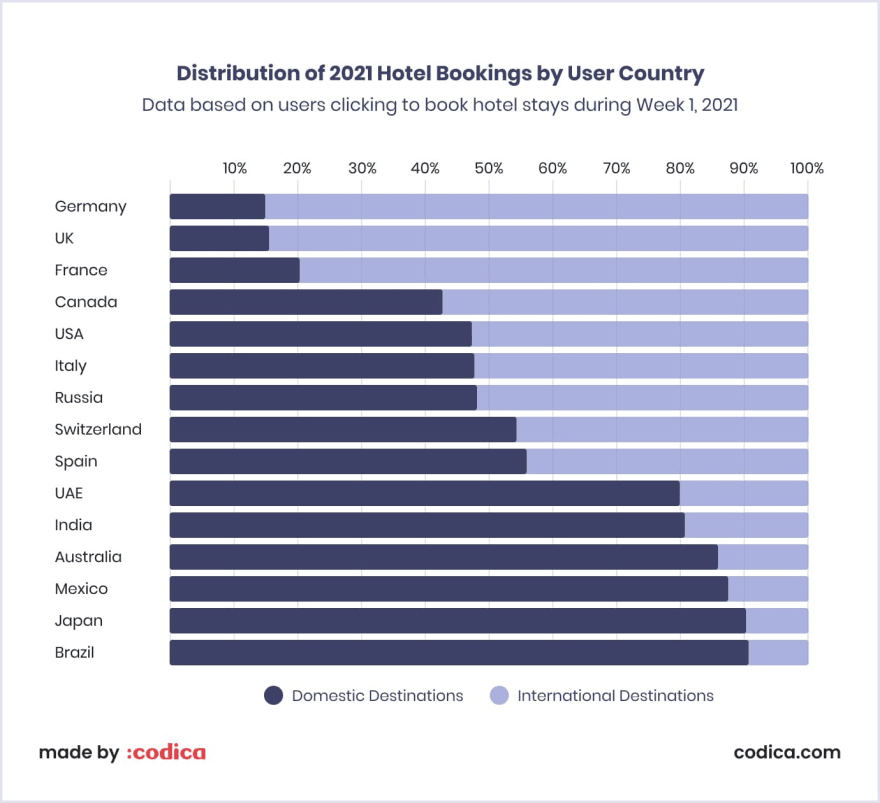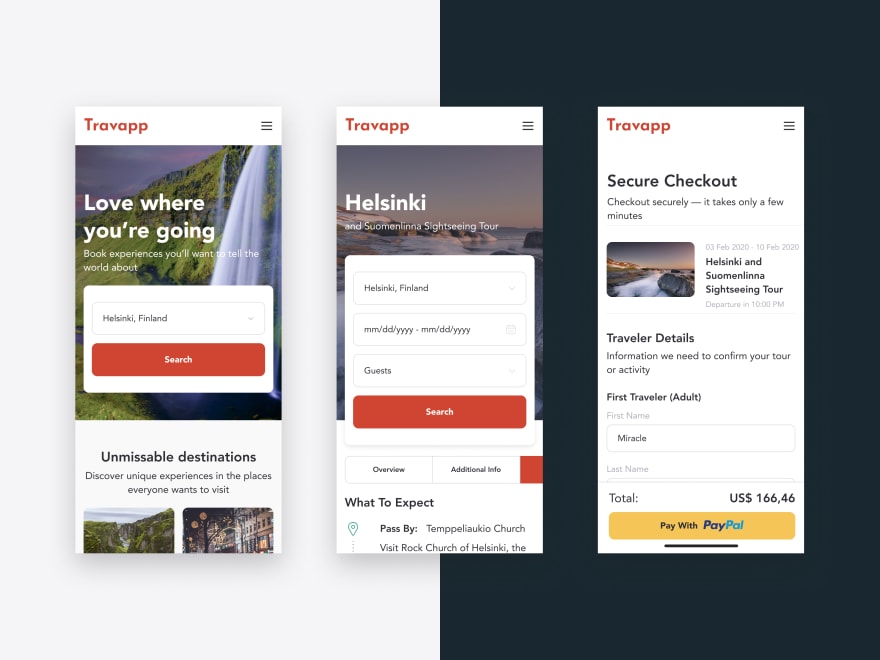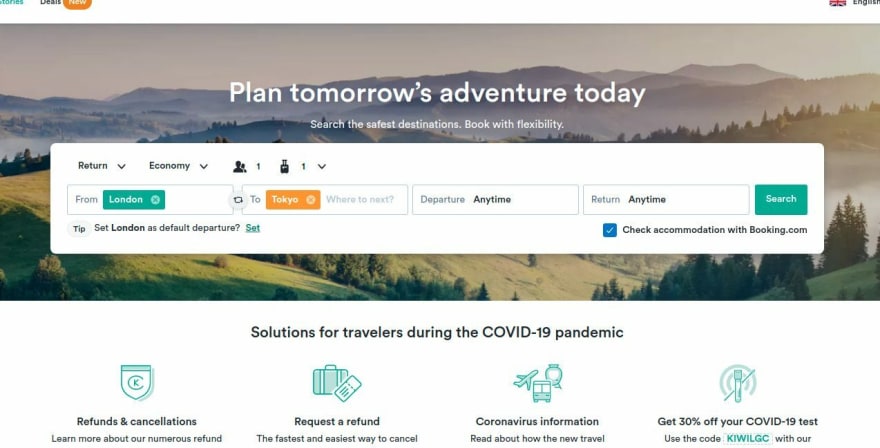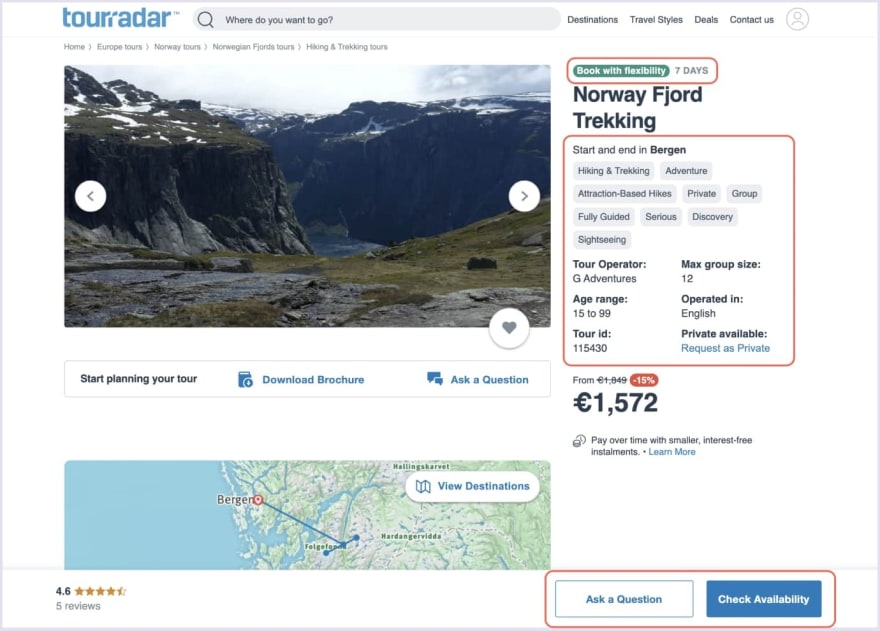Travel Websites: Overview, Types, and Steps to Build One

Codica
Posted on July 27, 2021

The article was initially published on Codica blog
No matter if you are planning a trip to a nearby town or one to a specific overseas destination, you will entrust your journey to travel websites. What hotel to choose, where to eat, and where to find the best camera lens - all these answers can be found on different travel websites.
So let’s find out what’s up with the travel market now, what problems travel websites solve, and how to create an alike solution.
Overview of the travel domain
Now, when the world is recovering from the pandemics, the travel segment is on the rise. Let us share the latest travel trends to follow.
1. Easing of Covid-19 restrictions
- Increased air traffic;
- Schengen areas reopen;
- Tourists are willing to travel once vaccinated;
- Booking growth.
Every day more and more people are planning and booking their next big journey. Below are some stats from TripAdvisor as per the 2021 booking state.
Source: TripAdvisor
2. Self-drive mode
Due to the Covid-19 measures, many people are forced to limit their traveling within native countries. That’s when a self-drive mode is gaining top popularity.
3. Workcation
Booking.com forecasted a “workcation” trend growth. It is becoming an increasingly popular thing to combine holiday time with remote work for both freelancers and full-time employees.
4. Unforgettable trips
The recent travel trends single out the rise in popularity of not-to-forget journeys to, let's say, Iceland. Such trips deliver a truly unforgettable experience and a sense of achievement for the traveler.
5. Fewer business flights
In spite of general travel traffic growth, one segment is witnessing a recession. Most business travelers will plan fewer flights than they used to, according to a poll.
Types of travel websites
A travel website helps us avoid journey-related hassles and issues. Be it one to find tickets, a hotel, or shop to buy needed equipment and more.
Below are some popular types of travel websites:
Tour operator. As a rule, there are inbound, domestic, and outbound tour operators. The inbound operator offers all arrangements for personal and group trips. Domestic operators offer local tours, while outbound ones sell international travel packages.
Personal journey matchmaker. This type of website allows selecting the needed tour independently. No tour operators are involved.
Travel accessories supplier. While planning a trip, a user needs many travel accessories to buy. Travel accessories supplier is a one-stop-shop website.
Hotel booking websites. These are the most popular among travel websites, offering people to find and book the needed rooms for requested dates.
Hotel alternatives. The travel business has big-name players, like Booking.com or Expedia. Still, there is some room for competition. Platforms like Airbnb have created a new direction for short-term rentals and guest houses.
Transportation explained. This type of travel website helps to deal with all possible transportation, including but not limited to finding the nearest gas station, getting from the airport to the hotel, and etc.
Travel Blog. People like to share and read stories, guides, and tips about traveling. Allow your website users to place a story to entertain and attract new travelers.
As an example of a travel website, you can see a concept created by Codica’s design team.
Guide: How to build a travel website?
Goals and audience
When you start off with a travel website, the goals of your audience come first.
So how to create an attractive travel website for your target audience? It's more effective to narrow down the audience to users’ profiles. We have singled out several user profiles based on audience lifestyle:
- People on a business trip;
- Families on vacation;
- Friends party;
- Extreme sports fans;
- Leisure travelers.
Monetization options
Below are some helpful clues on how to benefit from your travel website. Take into account that monetization options are closely connected with the goal you have chosen.
Listing. You can charge business pages for high listing visibility in search. This type of revenue model is used by TripAdvisor.
Commission. Such fees are one of the most popular options among travel agencies, and can as well be used for various travel platforms. Commission fee on, let’s say, Booking.com depends on the hotel ranking.
Transaction. If you create a travel website to sell travel-related equipment to direct customers, you will earn on every translation. Just like the GoTravel website does.
Advertising. Last but not least is the advertising option with the opportunity to earn on social ad campaigns, operators ads, and email marketing.
Functionality a travel website needs
The travel domain covers many types of travel sites. That’s why the required features set will vary for different business goals. Let us outline the must-have features for any travel website.
- Registration;
- Search;
- Reservation;
- Payment;
- Support;
- Notifications;
- Reviews;
- Maps;
- Mobile version.
Design tips for travel websites
There is no universal concept for all travel websites. Every new case depends on the target audience. Though, there are some design tips to help you out regardless of the target audience:
- Simple yet informative homepage. The homepage of your website should be free from any kind of overload. You should help your site visitors find the needed information really fast and with no puzzles. Below is a good example of UI/UX design by Kiwi providing instant access to the search bar with no extra filters.
- High-quality appealing images. We, as travelers, want to see destinations that make us pack our suitcases and buy the tickets. So make sure you have a set of beautiful destination photos that appeal and are of high quality, of course. Airbnb has an impressive photo gallery.
- Details on a booking page. Provide as many tour details as possible: free cancellation of a hotel, Covid-19 restrictions, and recommendations, group size, age, and other details. Add some CTAs available from any website page for users’ convenience. Below is an example of a website where navigation and tour booking is easy.
- The convenience of use. Since people are using just a few features on a travel website, there is no need to make your website loaded with extra functions. For example, a user wants to book a single room for, let’s say, Feb 27 - Mar 3. Don’t forget to add the dates for several months for smooth bookings, like in the example below:
The development approach to build a travel website
When we’re talking about the development approach, there are two options:
- Out-of-box solution;
- Custom software development.
The first approach is good if you need the website really fast and want to save costs on a solution from scratch. For instance, SiteMinder has out-of-the-box software to run a hotel website. The pitfall of ready-to-install software is that it lacks your brand identity.
Custom travel website development is longer yet it offers way more opportunities for your brand and business. You will stand out among alike solutions due to custom design, needed features set, and modern tech stack selection. Partner with a development team that has vast expertise in the travel domain, to end up with a unique, secure, and effective product.
Final thoughts
Nothing compares to traveling. Be it seeing the new sights, studying new cultures, or escaping reality. Nothing stands between you and your dream trip now. Actually, it’s just a matter of a few clicks.
The travel industry is witnessing a real boost now because more and more travelers are looking for new travel experiences. If you want to build a travel website, there are some proven ways to go: out-of-the-box solutions and custom development. Be sure to trust your product development to the professional team.
Have an idea of a travel website and need an expert team to help you? Get in touch.

Posted on July 27, 2021
Join Our Newsletter. No Spam, Only the good stuff.
Sign up to receive the latest update from our blog.





